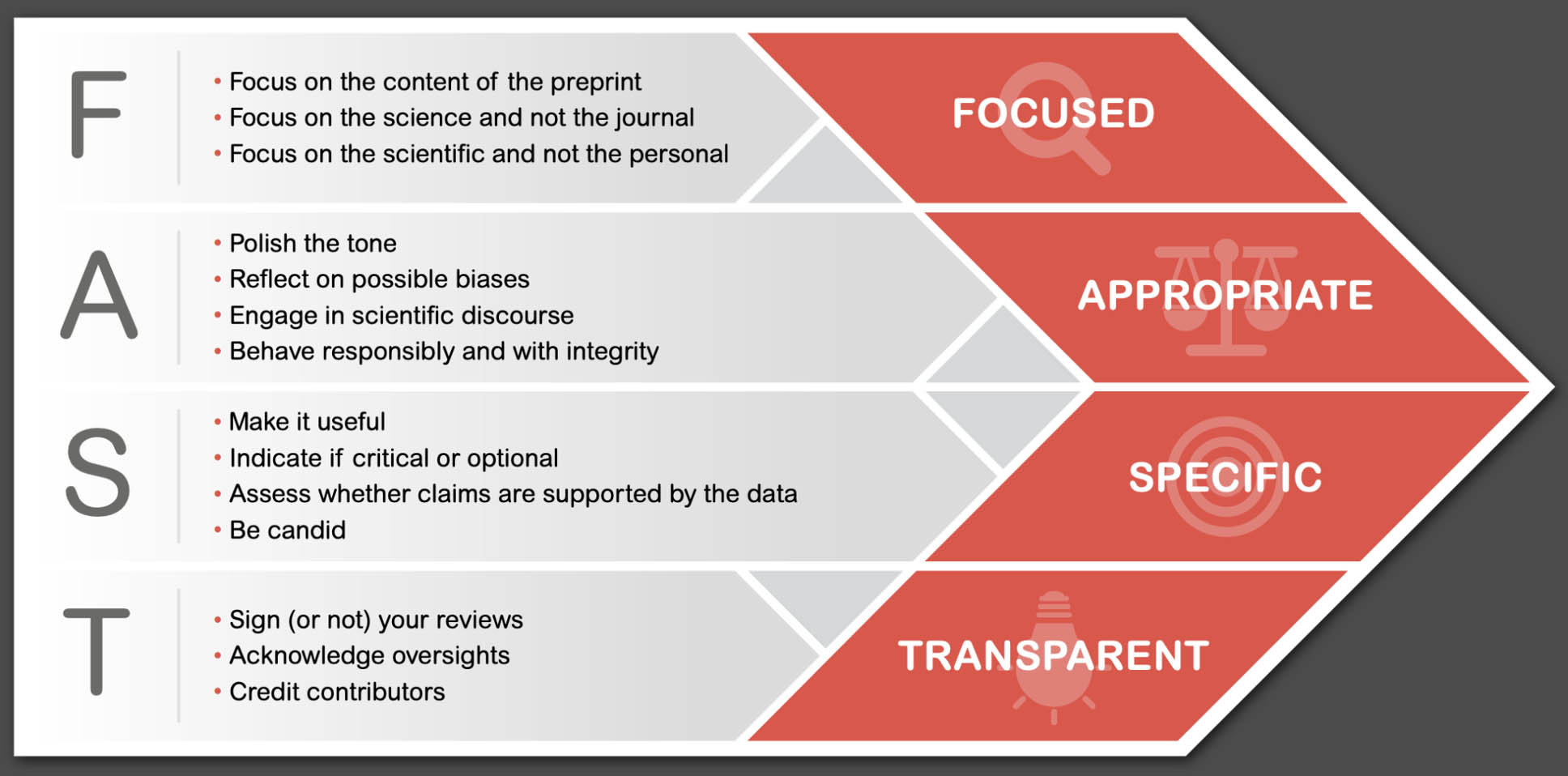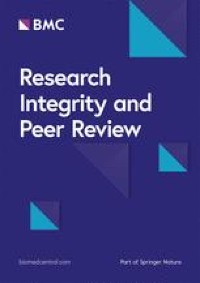Send us a link
ELife's New Model: Open for Submissions
All papers reviewed by eLife as part of our new model will now be published as Reviewed Preprints.
Preprint Review Should Form Part of PhD Programmes and Postdoc Training
Preprint Review Should Form Part of PhD Programmes and Postdoc Training
Institutions owe it to young researchers to prepare them for careers outside academia. Preprint review is a perfect opportunity.

Building Stronger Chains Together: Keeping Preprints Connected to the Scholarly Record - The Scholarly Kitchen
Building Stronger Chains Together: Keeping Preprints Connected to the Scholarly Record - The Scholarly Kitchen
In the global supply chain of scholarly communications, we share a responsibility for accurate metadata that represents the publication lifecycle -- from preprint to version of record, and everything in between.

Refereed Preprints Recognized As Eligibility Criterion for EMBO Postdoctoral Fellowships - Features - EMBO
Refereed Preprints Recognized As Eligibility Criterion for EMBO Postdoctoral Fellowships - Features - EMBO
EMBO will accept first author refereed preprints in applications for postdoctoral fellowships in a four-month trial.

Preprint Feedback is Here - Let's Make It Constructive and FAST
ASAPBio offers set of principles and guidelines for preprint feedback.

Biophysics Colab Brings Review and Curation to Biophysical Preprints on Sciety
Biophysics Colab brings review and curation to biophysical preprints on Sciety
Preprint Advocates Must Also Fight for Research Integrity
Efforts to share research with the public must include mechanisms to prevent harm resulting from low-quality work.

The Dawn of the Age of Duplicate Peer Review
Will the plethora review options for preprints usher in a new age of duplicate peer review?

Banning Preprints from Grant Applications Penalises Researchers for Being Up-to-date
Banning Preprints from Grant Applications Penalises Researchers for Being Up-to-date
A sudden rule change by the Australian Research Council-to ban grant applications that cite preprint material-has deemed 32 early and mid-career researchers ineligible to receive critical funding.

Preprints Are Not Going to Replace Journals
At a recent meeting, a debate was held on the motion: Preprints are going to replace journals. The author was asked to oppose the motion and this post is based on their arguments.

Comparison of Preprints and Final Journal Publications from COVID-19 Studies
Comparison of Preprints and Final Journal Publications from COVID-19 Studies
A comparison of preprints and their final journal publications show discrepancies in results reporting and spins in interpretation.
ELife Latest: Authors Can Now Submit a Manuscript to the Journal and MedRxiv at the Same Time
ELife Latest: Authors Can Now Submit a Manuscript to the Journal and MedRxiv at the Same Time
As eLife transitions to exclusively reviewing preprints, we have integrated medRxiv into our submission process for the rapid sharing of new medical research.
Opinion: Preprints in the Public Eye
ASAPbio has developed resources for preprint servers, institutions, scientists, and journalists to promote the responsible reporting of research in the media.

Imposters and Impersonators in Preprints: How Do We Trust Authors in Open Science?
Preprints play a crucial role in open science but offer an opportunity to be gamed. Fictitious authorship in preprints show that open science needs checks and we need to collaborate to govern Open Science.

Is Preprint the Future of Science? A Thirty Year Journey of Online Preprint Services
Is Preprint the Future of Science? A Thirty Year Journey of Online Preprint Services
Preprints make scholarly communication more efficient by disseminating scientific discoveries more rapidly. The measurements presented in this study can help researchers and policymakers make informed decisions about how to effectively use and responsibly embrace a preprint culture.
Preprints in Motion: Tracking Changes Between Posting and Journal Publication
Preprints in Motion: Tracking Changes Between Posting and Journal Publication
Study utilised a combination of automatic and manual annotations to quantify how an article from early 2020 changed between the preprinted and published version.

How the World is Adapting to Preprints
Preprint servers have become an indispensable part of scholarly publishing. The next step is learning how to embrace them.
Journalism, Preprint Servers, and the Truth: Allocating Accountability - The Scholarly Kitchen
Journalism, Preprint Servers, and the Truth: Allocating Accountability - The Scholarly Kitchen

Comparing Quality of Reporting Between Preprints and Peer-Reviewed Articles in the Biomedical Literature
Comparing Quality of Reporting Between Preprints and Peer-Reviewed Articles in the Biomedical Literature

Credibility of Preprints: An Interdisciplinary Survey of Researchers
Cues related to information about open science content and independent verification of author claims were rated as highly important for judging preprint credibility.
Encouraging Preprint Curation and Review
Review and commentary can help authors improve their articles; curation can provide readers with helpful context and enhance discoverability. But despite the benefits, barriers to reviewing and curating preprints remain.






